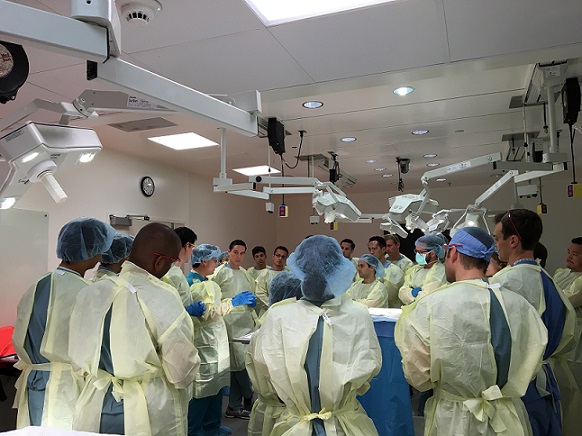Elizabeth Hofheinz, M.P.H., M.Ed.
Noting a lack of clarity surrounding the ideal anesthetic modality for postoperative pain control in anterior cruciate ligament reconstruction (ACLR), researchers from Midwest Orthopaedics at Rush University in Chicago and Twin Cities Orthopaedics, in Minnesota set out on a meta-analysis.
Their work, “Contribution of Multimodal Analgesia to Postoperative Pain Outcomes Immediately After Primary Anterior Cruciate Ligament Reconstruction: A Systematic Review and Meta-analysis of Level 1 Randomized Clinical Trials,” appears in the January 7, 2021 edition of the American Journal of Sports Medicine.
Co-author Bhargavi Maheshwer is a 4th year medical student at the University of Cincinnati College of Medicine. He told OSN, “In reviewing the literature, we observed that while there is ample data investigating the individual and combined advantages/disadvantages of spinal, regional, and local anesthesia, few investigations comparing the outcomes of these individual anesthetic techniques during the immediate postoperative period following ACLR had been performed.”
Asked why not much is known on this topic, co-author Jorge Chahla, M.D., Ph.D., a Complex Knee and Hip Surgeon in the Sports Medicine Division at Rush, told OSN: “We believe the most efficacious analgesic modality (spinal anesthesia, adjunct regional anesthesia, or local analgesia) during the first 24 hours following ACLR is not well known due to the immense variability in currently implemented postoperative pain protocols across institutions, as well as the lack of patient reported data regarding postoperative pain.”
A total of 263 studies were examined, of which 27 level 1 studies (n = 16 regional blocks; n = 12 local; n = 4 spinal) were included in the meta-analysis. The authors wrote: “VAS scores were significantly lower in patients receiving a regional block as compared with spinal anesthesia 8 to 12 hours after surgery, patients receiving an FNB versus ACB at 12 to 24 hours, and those treated with a continuous FNB rather than single-shot regional blocks (FNB, ACB) at 12 to 24 hours. No significant difference in VAS was appreciated when spinal, regional, and local anesthesia groups were compared.”
Commenting on the most interesting results was co-author Nikhil Verma, M.D., Professor and Director of the Division of Sports Medicine at Rush, who noted, “From the 27 included Level I studies, we found that VAS [Visual Analog Scores] were significantly lower in patients receiving a regional block compared to spinal anesthesia 8-12 hours following surgery, patients receiving a FNB [femoral nerve block] versus ACB at 12-24 hours, and those treated with a continuous FNB (CFNB) compared to single-shot regional blocks (FNB, ACB) at 12-24 hours.”
“Surgeons may utilize this data to assist with designing a multimodal preemptive and intraoperative anesthetic and analgesic protocol with efforts to minimize postoperative pain and narcotic consumption following ACLR. In addition, this work emphasizes the lack of data regarding opioid consumption and the incidence of complications related to anesthesia within the first 24 hours following ACLR, warranting further investigations.”








